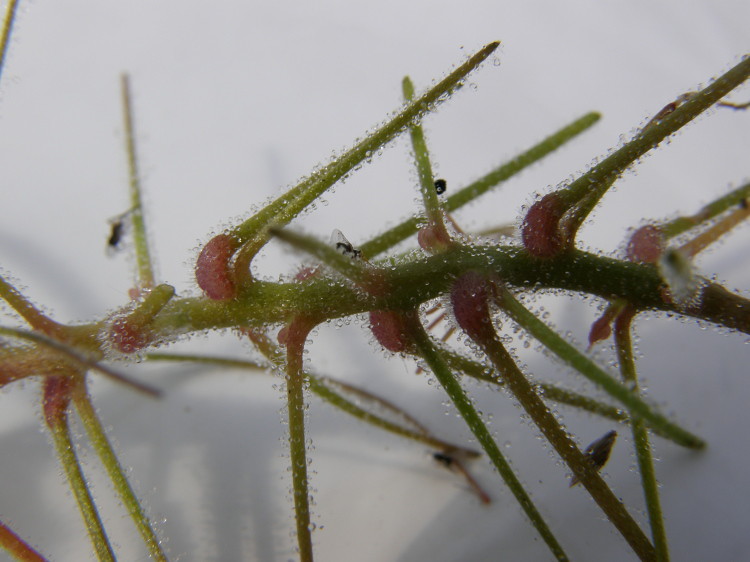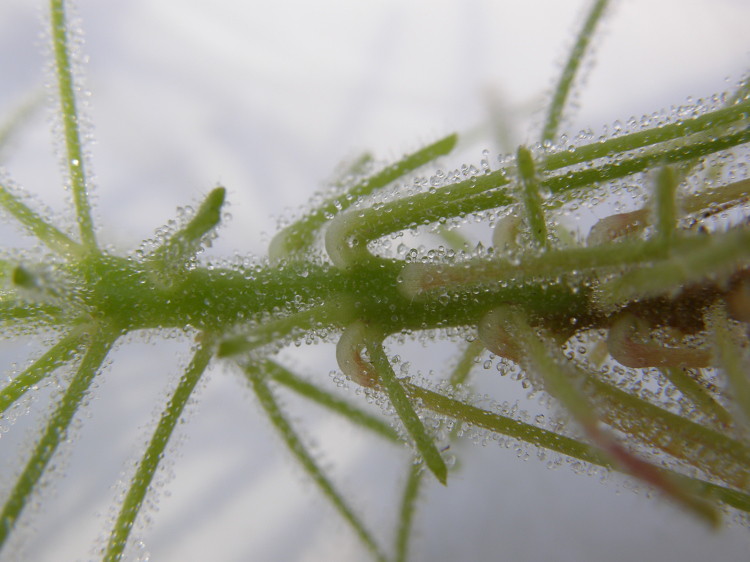|
|
Post by Brian Barnes on Oct 31, 2008 20:10:11 GMT
Hello Friends, I've just completed an update on my ongoing experiments with Byblis regarding flower colors, shades and petal fimbration patterns. Included are experiments concerning the "yellow backed" and "white backed" flower forms. A full article along with my recent results can be viewed here at the bottom of the page; www.floridacarnivorousplantsociety.org/thebyblischronicles.htmHere's a few pictures to "wet your whistle" which show different flower color, shade and petal varience...all on the same single clone.   |
|
|
|
Post by fischermans on Nov 1, 2008 20:20:25 GMT
Hello Isao sun
Wow a real eye catcher.How do you bring that many seeds to germinate? Do you use GA3 for all of them or have you a better method?
Regards Alexander
|
|
sweetpea
Full Member
MOLLIE RILSTONE
Posts: 163
|
Post by sweetpea on Nov 3, 2008 10:55:51 GMT
Konnichiwa! pinglover-san, >What are you using as a potting medium? Many cp growers use sphagnum, but many cp nurseries use peat-mixes. The main part of the mixes is peat moss and the other part is either perlite; sand; volcanic sand; red soil (loam); pumice; or vermiculite. Nurserymen keep their original mix contents and mix ratios secret. The main purpose of using peat mixture is to keep the cost of the soil medium low. I also use an original soil mix ratio and soil media types, which I too keep secret. I also have my secret methods relating to mass production and growing uniformity. Please understand I have got to keep my intellectual property rights of my breeding programs and mass growing methods secret. However, I can tell you some things where my methods differ from other Japanese nurseries. In the bottom of the pot, I put a small amount of charcoal (made from rice seed husk). The pH of this rice-husk charcoal is neutral to slightly acid. I water by the water tray method. Please see the first photo in the thread 1634. The charcoal quantity used equals the depth of the water tray. I also believe that you can use pumice or a broken pieces of clay pot instead of charcoal. I recommend that your soil medium is light and airy. Please see the photo 3: these plants were planted in 13.5cm diameter pots. If you wish to grow your plants over a long time, you must transplant to larger pots. When transplanting your plants, you must take care not break or disturb the soil and root ball in the smaller pot. If you break the soil and/or roots, it will cause serious damage and you may lose your plant. If you do not want your plant to grow into a long lax specimen, you can cut back the plant. When you do the first cut back, do not cut all the stems or branches at the same time. First, only cut back half the blanches, after one or two weeks you can cut back the remaining blanches. You can now enjoy the compact figure of your plant once again. Alexander-san, Please see the thread 1866. In Japan, it is easy to obtain GA3 (for agricultural use) at garden center or shop (for farmer). Very cheap, but high quality. There are pill type, granule type and liquid type. I recommend both pill type and granule type. If you use liquid type, you must let the liquid evaporate and after then add water. The liquid is the organic solvent. Use 10 mg of GA3 to 1,000 ml (1 litre) of water. If the GA3 solution is too strong it will harm for the Byblis seed. About the photo 7 and 8, In my opinion, the pulvinus in the photos is very common character of Byblis. Photo 7: deep pinkish mauve flowered smaller variation Photo 8: Byblis guehoi Good Growing Photo 7:  Photo 8:  |
|
|
|
Post by Brian Barnes on Nov 3, 2008 13:10:30 GMT
Hello Sweetpea, Thanks for sharing your photos with us, they are very interesting!  Also, thank you for sharing some of your cultivative information as well. It is quite valuable and you are definitely the Master, as far as mass production and cultivation of this remarkable genus goes... As far as pulvinic appendages go, Do the forms that are shown in your greenhouses have a pulvinus? I have noticed that some Byblis guehoi and Byblis filifolia forms both share the trait of pulvinic appendages, plus they also have the ability to produce multiple growth points or crowns if the tops of the plants are clipped. Also, certain forms will exhibit a reddish/maroon coloration in the pulvinus if the temperatures get cold. I've also seen this instance occur in the branches and upper stems of certain variants as well. However, I firmly disagree that pulvinus is a common trait of the genus Byblis. I've grown many forms of Byblis gigantea, Byblis liniflora and Byblis lamellata,and the pulvinic traits were not present at all. Quite interestingly, I have noticed that forms with pulvinus and with the branching habits present, do root very easily from cuttings, with nearly an 80% success rate. One elongated plant can produce several clones, with the tops producing the most vigorous plants. However, if the same adult plant is used too many times as a cutting donor, the strike rate of the cuttings and overall health of the parent plant begins to diminish rapidly. This will also produce the illusion of smaller- flowered variants, since the overall vigor, size and health of the cuttings/clones become extremely taxed, due to over-frequent propagation from the same clone or parent plant. The remaining portion of the parent/donor plant of course, then forms multiple crowns and produces an attractive, bushier specimen that is extremely desirable. It truly makes me wonder if Byblis guehoi and Byblis filifolia are indeed the same plant, just different forms or subspecies... My preferred media of choice for cuttings is pure blond Chilean sphagnum, finely milled. The media is quite airy, as to allow proper aeration for their many fine, hair-like roots. For germination of seed, a mix of half sand, half peat is preferred, since over-wet conditions are not tolerated too well, in my experience. Again, thank you for sharing with us! Happy Growing, Brian Barnes. |
|
|
|
Post by pinglover on Nov 3, 2008 14:43:55 GMT
Ahhh, thank you both for sharing tips with me! I am going to try seed of this someday. I love the color of the flowers.
|
|







